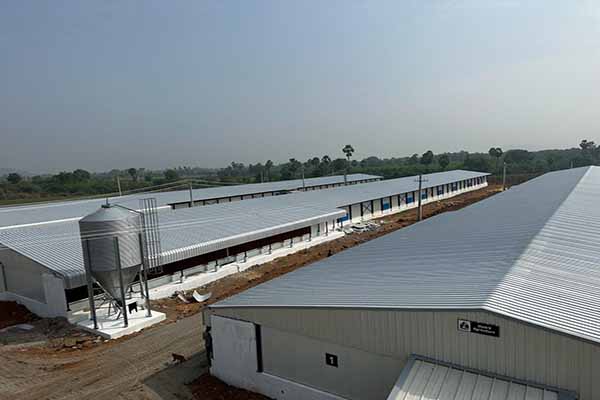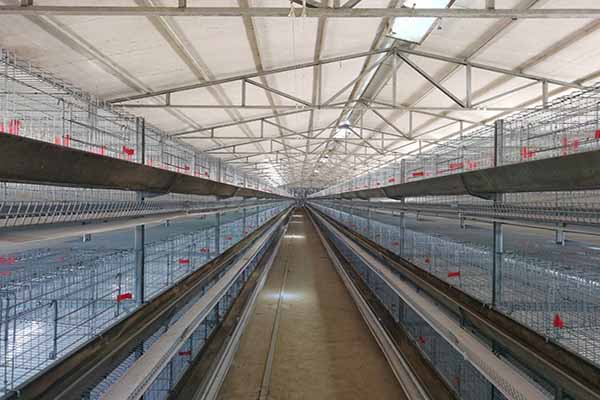Poultry Cages in South Africa for 10,000 Birds: The Ultimate Guide
Time : 2025-06-28
South Africa, with its diverse agricultural landscape, has seen a significant growth in the poultry industry. As the demand for poultry products continues to rise, so does the need for efficient and spacious poultry cages. For those looking to accommodate 10,000 birds, the selection and setup of these cages are crucial. This comprehensive guide will delve into the types of poultry cages available in South Africa, their features, benefits, and considerations for housing 10,000 birds.

Understanding Poultry Cages in South Africa
Poultry cages in South Africa are designed to provide a controlled environment for birds, ensuring their health, welfare, and productivity. These cages are typically made of metal or plastic and come in various sizes a nd configurations. The choice of cage depends on the type of poultry, the scale of the farm, and the farming objectives.
nd configurations. The choice of cage depends on the type of poultry, the scale of the farm, and the farming objectives.
Types of Poultry Cages in South Africa
- Birds per Cage: Cages are available in different sizes, ranging from small units for a few hundred birds to larger ones designed for up to 10,000 birds. For a farm housing 10,000 birds, you would need to opt for larger cages, often referred to as “barns” or “houses” in the industry.
- Layer Cages: These are designed specifically for laying hens and are typically equipped with perches, feeders, and nest boxes. They are often stacked vertically to save space.
- Broiler Cages: Broiler cages are larger and designed for growing chickens from chicks to market weight. They often include waterers and feeders and are structured to prevent the birds from soiling the feed and water.
- Free-Range Cages: For farmers looking to provide a more natural environment for their birds, free-range cages offer a compromise between confined and open-range systems. These cages allow birds to move around within a defined area but are still protected from predators and harsh weather conditions.
Key Features of Poultry Cages for 10,000 Birds
When selecting poultry cages for 10,000 birds in South Africa, certain features are essential to ensure the birds’ well-being and the farm’s profitability.
Space and Comfort
Each bird requires sufficient space to move around and express natural behaviors. For chickens, a general guideline is to provide at least 0.25 square meters per bird. With 10,000 birds, this would equate to a significant amount of space, requiring a large, well-ventilated building.
Environmental Control
Climate control is critical for the health and productivity of poultry. Proper ventilation, heating, and cooling systems are necessary to maintain optimal temperature and humidity levels. Automated systems can adjust the environment based on weather conditions and the birds’ needs.
Feeding and Watering Systems
Efficient feeding and watering systems are vital. The cages should be equipped with automatic feeders and waterers that can supply food and water to all birds at a consistent rate. This reduces the labor required for feeding and ensures each bird receives adequate nutrition.
Health Management
Easy access to each bird is essential for health management. Cages should allow for easy observation and access for veterinary checks and medication. Features such as removable cage dividers can help control diseases by isolating sick birds.
Material and Durability
The material used for the cages should be resistant to corrosion and withstand the environmental conditions in South Africa. Galvanized steel or high-quality plastic are common materials due to their durability and resistance to wear and tear.
Setting Up Poultry Cages for 10,000 Birds in South Africa
Setting up poultry cages for 10,000 birds is a complex process that requires careful planning and execution. Here are some key steps to consider:
Site Selection
The location of the farm should be chosen based on factors such as proximity to markets, availability of feed, water, and electricity, and the potential for growth. The site should also have good drainage to prevent waterlogging.
Building Design
The design of the building should accommodate the number of birds, their species, and the required equipment. The roof should be designed for effective ventilation and shading to reduce heat stress.
Cage Placement
Cages should be placed in a logical order to ensure easy access for feeding, watering, and cleaning. It’s also important to consider the flow of birds within the cages to prevent unnecessary stress and aggression.
Environmental Systems
Install and maintain the environmental control systems to ensure optimal conditions for the birds throughout the year. Regular maintenance is crucial to prevent system failures and ensure efficiency.

Staff Training
The farm staff should be trained in the proper handling and care of the birds, as well as the operation and maintenance of the equipment. This training is essential for the farm’s success and the birds’ well-being.
Conclusion
Setting up poultry cages for 10,000 birds in South Africa requires careful planning, quality equipment, and attentive management. By choosing the right type of cage, focusing on key features such as space, comfort, environmental control, and health management, farmers can create an optimal environment for their birds. With proper setup and ongoing care, a farm can achieve high productivity and profitability in the poultry industry.











